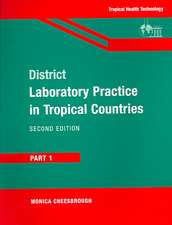Animal Models for the Study of Human Disease
Editat de P. Michael Connen Limba Engleză Hardback – 21 iul 2013
- Organized by disease orientation for ease of searchability
- Provides information on locating resources, animal alternatives and animal ethics
- Covers a broad range of animal models used in research for human disease
| Toate formatele și edițiile | Preț | Express |
|---|---|---|
| Hardback (2) | 1254.06 lei 36-50 zile | |
| ELSEVIER SCIENCE – 21 iul 2013 | 1254.06 lei 36-50 zile | |
| ELSEVIER SCIENCE – 28 iun 2017 | 1474.34 lei 36-50 zile |
Preț: 1254.06 lei
Preț vechi: 1723.84 lei
-27% Nou
Puncte Express: 1881
Preț estimativ în valută:
239.96€ • 251.21$ • 198.55£
239.96€ • 251.21$ • 198.55£
Carte tipărită la comandă
Livrare economică 31 martie-14 aprilie
Preluare comenzi: 021 569.72.76
Specificații
ISBN-13: 9780124158948
ISBN-10: 0124158943
Pagini: 1108
Dimensiuni: 216 x 276 x 53 mm
Greutate: 3.24 kg
Editura: ELSEVIER SCIENCE
ISBN-10: 0124158943
Pagini: 1108
Dimensiuni: 216 x 276 x 53 mm
Greutate: 3.24 kg
Editura: ELSEVIER SCIENCE
Public țintă
Biomedical and basic science researchers, graduate students and postdocs.Cuprins
Preface
Section A. ETHICS, RESOURCES AND APPROACHES
Section B. VISION
Section C. CARDIAC AND CARDIOVASCULAR
Section D. OBESITY, METABOLIC AND LIVER
Section E. BONE AND SKIN
Section F. URINARY TRACT, KIDNEY AND BOWEL
Section G. THE BRAIN, STROKE, AND NEUROMUSCULAR
Section H. BEHAVIOR
Section I. GENETICS
Section J. EARLY LIFE
Section K. VIRAL DISEASE
Section L. CANCER
Section M. SCLEROSIS
Section A. ETHICS, RESOURCES AND APPROACHES
Section B. VISION
Section C. CARDIAC AND CARDIOVASCULAR
Section D. OBESITY, METABOLIC AND LIVER
Section E. BONE AND SKIN
Section F. URINARY TRACT, KIDNEY AND BOWEL
Section G. THE BRAIN, STROKE, AND NEUROMUSCULAR
Section H. BEHAVIOR
Section I. GENETICS
Section J. EARLY LIFE
Section K. VIRAL DISEASE
Section L. CANCER
Section M. SCLEROSIS
Recenzii
"...addresses how to locate resources, animal alternatives, animal ethics and related issues, much needed information for researchers across the biological sciences and biomedicine." --Anticancer Research, February 2015
"…a very detailed textbook for researchers and laboratory animal veterinarians interested in getting an understanding of some of the animal models of human diseases. The authors have done a good job of reviewing the numerous animal models in various physiological systems." --Laboratory Animal Practitioner, June 2014
"Conn presents this compendium on animal models in biomedical research, beginning with a section on ethical justifications, resources, and methodology to optimize the scientific value obtained from animal experiments. After this discussion, the volume is organized by disease group…The book aims to present successful animal models with the greatest homology to human systems." --ProtoView.com, February 2014
"This comprehensive textbook identifies important animal models and assesses the advantages and disadvantages of each model for the study of human disease…Organized by disease orientation for ease of searchability…Provides information on locating resources, animal alternatives and animal ethics." --Anticancer Research, 34, 2014
"…overall, the content (figures, tables and descriptions of the animal models and their significance) is excellent and should be considered a useful resource…Any laboratory animal research program, particularly those with an interest in working with multiple species of animal models, would benefit from having this book in the library." --Lab Animal, February 2014
"…a very detailed textbook for researchers and laboratory animal veterinarians interested in getting an understanding of some of the animal models of human diseases. The authors have done a good job of reviewing the numerous animal models in various physiological systems." --Laboratory Animal Practitioner, June 2014
"Conn presents this compendium on animal models in biomedical research, beginning with a section on ethical justifications, resources, and methodology to optimize the scientific value obtained from animal experiments. After this discussion, the volume is organized by disease group…The book aims to present successful animal models with the greatest homology to human systems." --ProtoView.com, February 2014
"This comprehensive textbook identifies important animal models and assesses the advantages and disadvantages of each model for the study of human disease…Organized by disease orientation for ease of searchability…Provides information on locating resources, animal alternatives and animal ethics." --Anticancer Research, 34, 2014
"…overall, the content (figures, tables and descriptions of the animal models and their significance) is excellent and should be considered a useful resource…Any laboratory animal research program, particularly those with an interest in working with multiple species of animal models, would benefit from having this book in the library." --Lab Animal, February 2014








